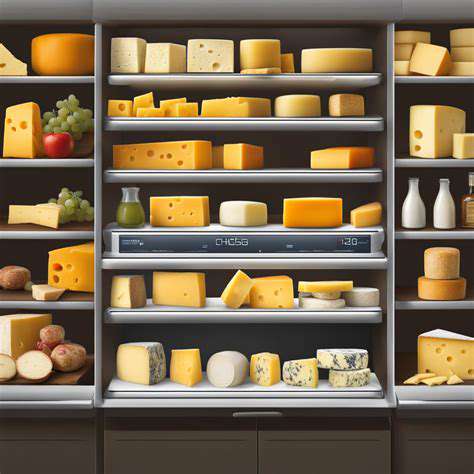Storing Cheese: Keep It Fresh and Flavorful
Specific Storage Tips for Different Cheese Types
Hard Cheeses
Hard cheeses, like Cheddar, Parmesan, and Gruyère, are known for their firm texture and long shelf life. Proper storage is crucial to maintaining their flavor and preventing dryness. Wrap these cheeses tightly in plastic wrap or wax paper, then place them in an airtight container or a dedicated cheese drawer in your refrigerator. Avoid storing them directly on the refrigerator shelves, as fluctuating temperatures can affect their quality. Remember to use the cheese within a few weeks of opening to ensure optimal flavor.
For hard cheeses that have been grated or sliced, store them in an airtight container in the refrigerator. This helps to prevent them from drying out and absorbing unwanted odors. Properly storing grated cheese is especially important to preserve its texture and flavor. The key is to maintain a cool, dry environment to prevent premature aging.
Soft Cheeses
Soft cheeses, including Brie, Camembert, and Feta, are more delicate and require specific storage conditions to prevent mold growth and maintain their creamy texture. These cheeses should be stored in their original packaging, if possible, to maintain freshness. If the cheese is in an individual container, place it in a slightly larger, airtight container. Then, store them in the refrigerator's designated cheese drawer, or a cooler, crisper drawer. Always wrap the cheese in parchment paper or wax paper to prevent moisture from accumulating and encouraging mold growth.
Soft cheeses should be consumed sooner than hard cheeses, often within a week of opening. Proper storage is essential to avoid rapid spoilage and maintain the desirable flavor profile of these cheeses. Ensure the cheese is stored at a consistent temperature to prevent unwanted changes in texture and flavor.
Semi-Hard Cheeses
Semi-hard cheeses, like Colby and Monterey Jack, fall somewhere between hard and soft cheeses in terms of texture and storage needs. They generally benefit from being wrapped tightly in plastic wrap or wax paper and stored in an airtight container in the refrigerator. Similar to hard cheeses, avoid direct contact with other foods to prevent the transfer of odors and flavors. Proper storage is vital for maintaining their characteristic flavor and texture. Semi-hard cheeses can last a few weeks in the refrigerator, depending on the specific type and how they were stored.
Blue Cheeses
Blue cheeses, like Roquefort and Gorgonzola, have a unique flavor profile and require careful handling and storage. Wrap them tightly in plastic wrap or wax paper and store them in an airtight container in the refrigerator. Blue cheeses are particularly susceptible to drying out, so keeping them in their original packaging or a dedicated container is highly recommended. Avoid storing them near strong-smelling foods, as their delicate flavors can be affected. Blue cheeses generally have a shorter shelf life compared to other types and should be consumed within 2 weeks of opening to maintain optimal flavor and texture.
Storing blue cheese properly is crucial to preserving its characteristic flavor and preventing the growth of unwanted bacteria. The key is to maintain a cool, dry, and odor-free environment within the refrigerator.

- Storing Rice and Grains: Pantry Best Practices
- Baking for Beginners: Easy Recipes to Master
- High Protein Vegan Meals: Delicious Plant Based Power
- Buying Organic Produce: Is It Worth the Cost?
- High Fiber Diet Benefits: Recipes for Digestive Health
- Low Sodium Dinner Recipes: Heart Healthy and Delicious
- Homemade Granola Bars: Healthy and Portable
- Discovering Ethiopian Injera: The Ultimate Guide
- Kitchen Island Lighting: Style and Function
- Storing Root Vegetables Long Term: Cellar Tips
- Storing Fresh Produce: Optimal Conditions
- Homemade Ice Cream: Creamy and Dreamy